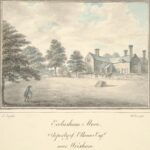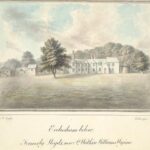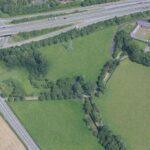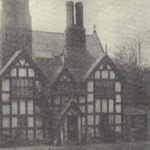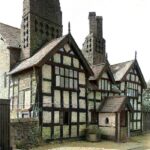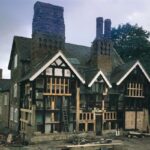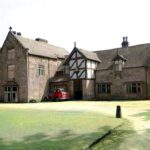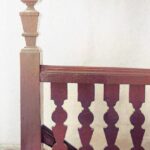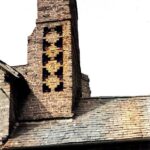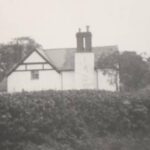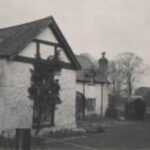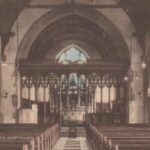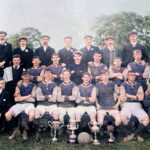Esclusham
The name is recorded as Esclesham or Esclusham as early as 1315, likely originating in a combination of the Old English personal name Æscel with ham, “settlement”. The old township of Esclusham, within the manor of Esclusham, was part of the historic Marcher Lordship of Bromfield and Yale.
The township of Esclusham Above (i.e. “above” Offa’s Dyke) was incorporated in the parish of Minera from 1844; in 1879 parts of Esclusham Above, Esclusham Below, and Erddig were incorporated in the civil parish of Esclusham. As a result of the Local Government Act 1972, this was itself replaced in 1974 by the Community of Esclusham, currently based in the Parish Hall, Rhostyllen.
In the western, rural part of the community the land rises to the high pastureland and moorland above Fron-deg and Aber-oer known as Esclusham Mountain. Until the early 20th century there were lead and zinc mines on the mountain, and the area was used for grouse shooting. There are several structures of interest in industrial archeology, including the Bersham Ironworks and old lead workings. The Minera Caves, a Site of Special Scientific Interest, lie beneath Esclusham Mountain: over 8 kilometres of caves connecting with the old lead workings have now been mapped
Esclusham Hall, a timber-framed hall house close to the Pentrebychan Crematorium, which was originally called Esclus Hall, dates back to at least the 17th century when it was was rebuilt by Robert Trevor. ln 1757, Richard Trevor sold the house and surrounding land to John Hughes of Cilnant Llangollen. Three years later, Hughes mortgaged the estate to Peter Ellames of Chester and from him it passed to his son Peter (mayor of Chester in 1781) and, in 1864, to Thomas Ellames Withington of Culcheth Hall. Twenty years later he sold the house to Henry W. Meredith of Pentrebychan. In 1834, the house was leased to the Pules ton family. The house survives today and is located just to the south of Legacy Water Tower.
Hafod – Y – Bwch Hall which stands Between the A483 and the B5605 Wrexham Road in the old ward of Esclusham, was originally built as a late medieval timber framed hall-house in the 15th century by Hugh Roberts. It has had various features added over the years, particularly a timber-framed cross-wing on the south end of the hall and in the 17th century two short, parallel, gabled wings on the east side. Also, at this time, the grand staircase was purchased from Five Fords Hall, Marchwiel. Hafod – Y – Bwch is now A Grade II Listed Building.

